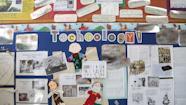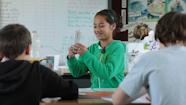"Celebrating Puanga at Ramanui", School Journal, level 2, November 2017
24 November 2017

This article describes how a school in Taranaki celebrates the appearance of the star Puanga. For them, this signals the start of the Māori New Year because it is difficult to see Matariki in the Taranaki region.
You can find PDF versions of the text and the teacher support materials, as well as the audio on Literacy Online: Celebrating Puanga at Ramanui, School Journal, level 2, November 2017.
Other useful resources
Students could also explore technologies that are used to capture images and information about the night sky.
The Art of Night: The Photography of Mark Gee
Mark Gee is a New Zealand astrophotographer. He discusses some of the technology he uses to take his stunning photographs of the night sky.
How Have Telescopes Changed Over Time
Telescopes were first invented in the 17th century. The developments in telescopes have allowed humans to see things nowadays which are normally not visible to the human eye.
Sky-sweeping Telescope Sees First Light
This article and video describes a new innovative telescope that can record videos of the eternal sky changes from night to night.
Discussion questions
These could include:
- What resources do the class have available to make a time capsule?
- What will the purpose and attributes of the time capsule be?
- What key stages will there be as we make our time capsules?
- How can we describe our potential time capsules through, drawing, models and verbally?
- Which capsule would be the best one to make?
- Did our final outcome successfully address the brief?
Explore some of the technologies used to view the night sky:
- How have these technologies had a positive impact on society?
- What is the relationship between telescopic technologies and the made, natural, and social world?
Indicators of progression for discussion starters
| Component | Indicator | Level |
| Brief development |
| 2 |
| Planning for practice |
| 2 |
| Outcome development and evaluation |
| 2 |
| Characteristics of technology |
| 2 |
Related videos
Technology and literacy in years 3–4: Flight inquiry (04:56)
Andrea Robertson describes the richness of their "amazing flight inquiry" – incorporating EOTC and learning in technology, literacy, and numeracy. ...
Technology, mathematics, and science in years 3–4: Flight inquiry (03.38)
Andrea Robertson and Lisa Hocking share how mathematics and science were incorporated into their technology learning.
Embedding literacy in technology (01:51)
Cheryl Pym shares the benefits of providing strategies to understand words.
Strategies for literacy in technology (02:44)
Cheryl Pym explores the features of literacy within technology.




